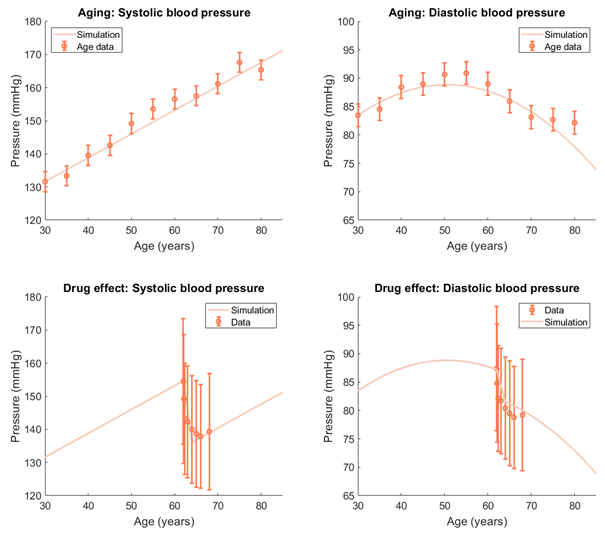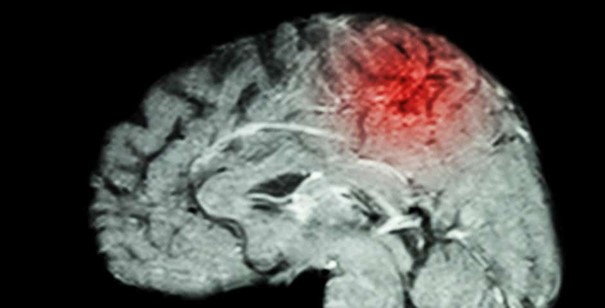Cardiovascular diseases
High blood pressure – hypertension
Increased blood pressure, hypertension, affects one third of the population worldwide. The European definition of hypertension is systolic blood pressure above 140 mmHg or diastolic blood pressure above 90 mmHg. An increase in systolic or diastolic blood pressure puts stress on the cardiovascular and renal system which increases the risk of cardiovascular and renal complications such as stroke, coronary heart disease, heart failure, and renal failure. In this project, we use mathematical models to increase the understanding of different aspects of hypertension – from detailed lumped parameter models of blood flow and blood pressure during one heartbeat to more simple models of long-term blood pressure changes over several years. The detailed lumped parameter models of the heart and cardiovascular system can differentiate between the subject-specific beat-to-beat regulation of blood pressure in patients with and without hypertension. More simple long-term models can accurately predict increase in blood pressure due to aging.

Apart from understanding the cardiovascular mechanisms of hypertension, it is important to understand the mechanisms of lowering blood pressure. Lowering the blood pressure in hypertension is crucial to reduce morbidity and mortality. To lower blood pressure, there is a large range of anti-hypertensive drugs along with lifestyle advice for the health professionals to choose from, acting on different parts of the cardiovascular system. Despite this increasing number of treatment options together with increased knowledge of the mechanisms of hypertension, the proportion of controlled hypertension is only around 20% and a trial- and error approach is used when initiating a blood-pressure lowering treatment. To better understand the patient-specific effects of anti-hypertensive drugs, we want to further develop our cardiovascular models to include drug effects. We have developed a few initial models that accurately can describe the blood pressure decrease due to anti-hypertensive drugs both on a simple long-term scale and the more detailed effect son the renin-angiotensin system over a few weeks. The next step is to create detailed models of the patient-specific change in beat-to-beat regulation of blood pressure before and after starting to take anti-hypertensive drugs.
Collaborations
Tino Ebbers, professor at Linköping University. Expert in cardiovascular imaging.
Carl-Johan Carlhäll, MD and professor at Linköping University. Expert in cardiovascular physiology and imaging.
The CMR group at Linköping University.
Karin Rådholm, MD, senior associate professor and docent at Linköping University. Expert in cardiovascular and metabolic disease.
Magnus Wijkman, MD, adjunct senior lecturer and docent at Linköping University. Expert in cardiovascular disease.

